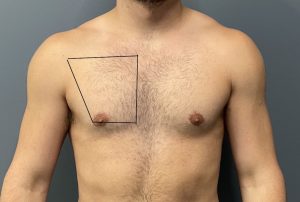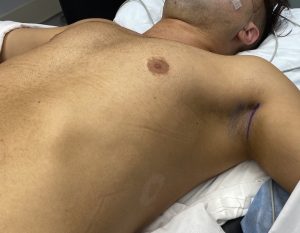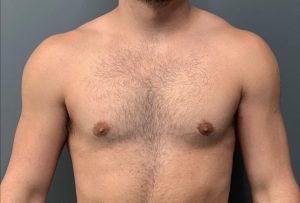Background: Pectoral implants are the male equivalent of breast implants in women when it comes to chest enhancement. But there are major differences in both the implants used and their desired effect. Pectoral implants are made of a solid soft silicone material which can never undergo failure or need to be replaced. They are inserted through the armpit and placed under the pectorals major muscle. (but on top of the pectoralis minor muscle) By doing so the objective is to create a more visible muscle outline and size.
Another major difference between pectoral and breast implants is the lack of understanding of how to size the implant to the patient’s objective. A lot of been written about how to select an implant to create an enlarged breast mound which is dimensionally simpler because the main footprint of the implant is the diameter of a circle. But the pectoralis major muscle its dimensionally more complex having a trapezoid shape. The fours sides of the pectoral muscle/implant footprint are the superior horizontal clavicle line, the inferior horizontal muscle attachment line, the purely vertical medial muscle origin and the oblique lateral muscle edge. For most patients the implants needs to reside within this footprint which four sided measurements help select the desired implant shape and placement orientation.
The profile of a pectoral implant helps determine where the thickness of the muscle is enhanced. In making this selection it is important to appreciate that the pectoral muscle is not equally thick throughout on the chest wall. The muscle is thinner at its attachments to the sternum and lower ribs and thickest as its ascends across the chest up towards the axilla to its humeral insertion. While some pectoral implants have an even thickness throughout others have a profile that is thicker (higher) on one half of the implant than the other. This becomes relevant as some patients have their greatest muscle deficiency in the upper medial portion of the chest while others may want more enhancement along the lateral pectoral line.

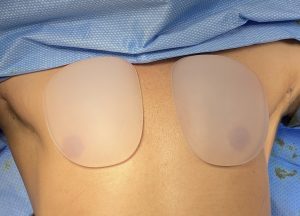
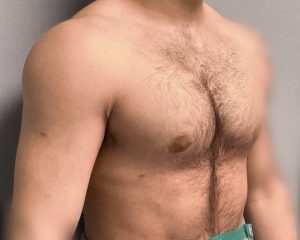
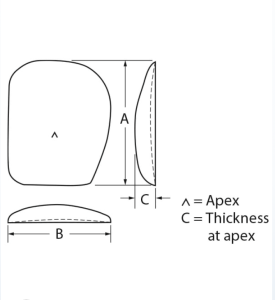
Case Highlights:
1) Pectoral implants remain the mainstay of non-exercise chest enhancement for men.
2) Choosing the correct pectoral implant from standard options is a function of matching the implant footproint, profile and projection for the patient’s desired aesthetic effect.
3) Through a high axillary incision pectoral implants are placed in the sub muscular position, usually not disrupting the lateral pectoral line.
Dr. Barry Eppley
Indianapolis, Indiana




